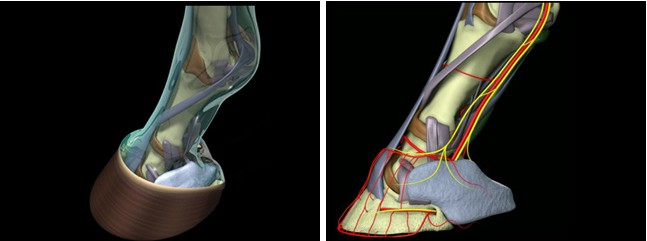E-Learning Council’s Linda Warren sits down with E-Learning Symposium 2011 Houston presenter Flint Buchanan to hear about his work with The Glass Horse, a thrilling interactive training tool for the University of Georgia College of Veterinary Medicine.
ELC: Thanks for agreeing to be a presenter and doing this interview. We are very excited about your session at the E-Learning symposium!
Flint: Thank you. It is certainly an honor and I am looking forward to it!ELC: Great! Can you start by giving us a little bit of background about yourself – what you do at the University of Georgia?
Flint: Sure. I’m the instructional designer for the UGA College of Veterinary Medicine. I work primarily with Large Animal Medicine, but do consult with other departments. My duties include creating and evaluating learning tools for the professors. This includes anything from shooting video of a surgery to developing 3D models of anatomy to developing test questions. The Glass Horse Project was born at the vet school, and really has grown organically out of need for effective teaching.
ELC: The Glass Horse is one of the most impressive training tools I have ever seen. Can you describe it for someone who is not familiar with the product?
Flint: Thank you. We are always humbled to hear how someone appreciates what we’ve created. The Glass Horse is essentially, an interactive, self driven, learning tool. It is designed to give a clear picture of the underlying anatomy,and resultant diseases, of the horse’s gastrointestinal tract. It has 3D VR models that can be manipulated in all directions. It has movies that present situations which have a ‘linear’ component …such as diseases which have a progression. And it has still imagery and, when appropriate- ultrasound examples. The package is designed so that it can serve as both a teaching tool, and as a review tool for students. It’s main goal is to demonstrate the very difficult to describe conditions of “colic”. About 15 years ago Dr. Jim Moore, a professor in Large Animal Medicine, decided he wanted to find a better way to teach colic. Traditionally the disease state was taught through didactic lectures which used still imagery. however, many of the diseases of colic were not conducive to such a methodology. And it was difficult for the students to transfer their text and still image based learning into clinical situations. So Dr. Moore began investigating using animation and the nascent technology of 3D animation in particular. I could keep rambling if you want…
ELC: This is terrific. Could you comment on how your 3D learner-driven models make learning transfer to a clinical situation better than traditional teaching methods?
Flint: Our theory is that learning with the 3D models translates into clearer visualization by the student. And this clearer visualization is one key to freeing up their problem solving skills (which is what we’re really after). For example- if the student is both trying to identify the anatomy, as well as trying to create a diagnosis from all of the information presented, then they are taxed more than if they have a clear understanding of the anatomy. It frees up that bit of working memory. Why this works is certainly an area of study we’re interested in. I have my own belief that it has to do with spatial cognition — i.e. the students functional knowledge of the anatomy. Others might contend that it’s the fact that the animations, and particularly the VRs, are a ‘richer’ learning experience that engage multiple learning modes. Of course it’s probably both.
ELC: It seems if the subject has complex 3D relationships, a 3D model is the most effective way to represent the subject.
Flint: That was our belief.
ELC: What do you hear from students who use The Glass Horse?
Flint: It’s been really well received by the students. It’s a bit insular for us, because we work with it every day; but when we hear from someone asking if we have ever thought about translating it into Mandarin, we get really moved. It’s certainly been one of the most impactful projects I’ve ever worked on.
ELC: That’s great! At the symposium, we’ll look forward to seeing a demonstration of the The Glass Horse. I hope we’ll hear about the technology you use to create it, what challenges you have faced, and where you see your work going in the future. Thank you for sharing information about your terrific work!
Flint: Thank you. I’m looking forward to it!
To learn more about Flint and The Glass Horse project, register for E-Learning Symposium 2011 Houston on October 25th!
